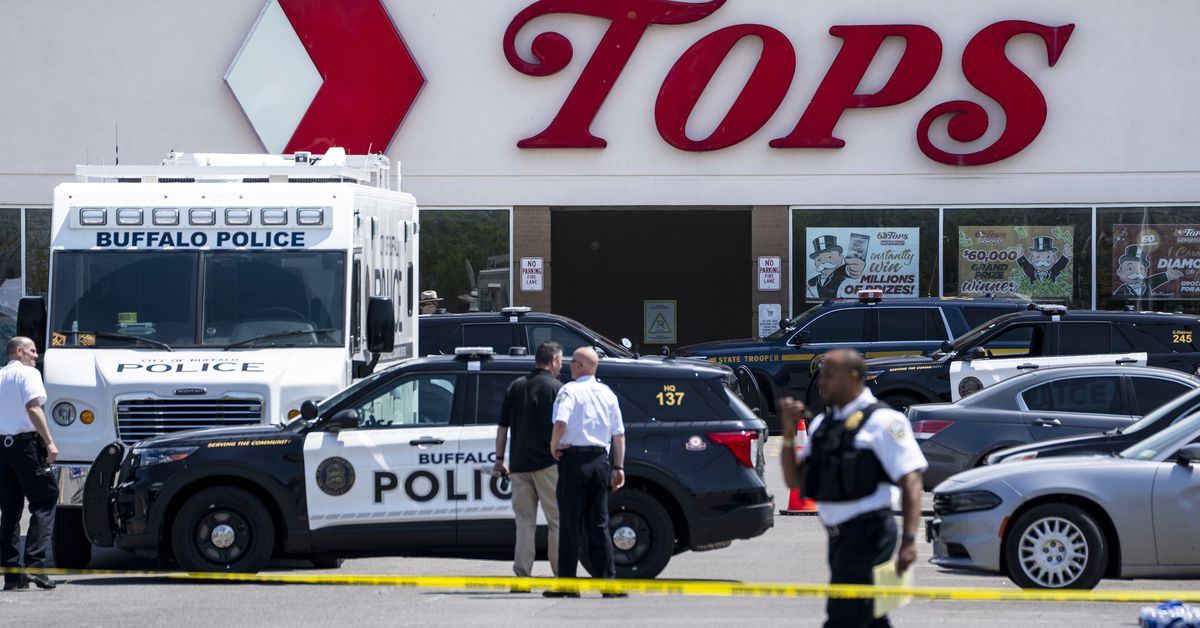After a gunman killed 10 people at a Buffalo supermarket on Saturday, New York Gov. Kathy Hochul publicly wondered why a state law designed to proh
After a gunman killed 10 people at a Buffalo supermarket on Saturday, New York Gov. Kathy Hochul publicly wondered why a state law designed to prohibit individuals like him from obtaining a gun didn’t work as intended.
In 2019, New York enacted an extreme risk prevention law, otherwise known as a “red flag law,” that can bar individuals who present an immediate danger to themselves or others from possessing firearms. The Buffalo shooter didn’t have a previous criminal record, but he had made serious threats of violence that were brought to the attention of police.
“I’ve asked for the investigation of exactly what transpired there,” Hochul told Buffalo’s WKSE radio on Monday when asked why police didn’t bar him from possessing a gun.
When the shooter was 17, he said that he wanted to commit murder-suicide at his high school. He was required to undergo a psychological evaluation and referred to police, who decided not to take further action for reasons still unknown. So when he turned 18, there was nothing preventing him from legally purchasing a weapon. And he did. The weapon he used in the shooting was purchased from a store in Endicott, New York: a Bushmaster semiautomatic rifle that he illegally modified to increase its capacity.
Under New York’s red flag law, that never should have happened.
“This is the kind of story that these orders have been created for,” said Christian Heyne, vice president of policy at the gun control advocacy organization the Brady Campaign. “The tool wasn’t implemented the way that New York designed.”
How do red flag laws work?
Nineteen states and Washington, DC, currently have red flag laws, otherwise known as extreme risk protection laws. It’s a form of gun control that even Republicans have endorsed, including some red-state governors, former President Donald Trump, and South Carolina Sen. Lindsey Graham. Connecticut was the first to enact such a law two decades ago, but the rest were passed in the last six years.
Those more modern laws follow a similar formula modeled after domestic violence protection orders. Certain people can petition for an extreme risk protection order from a court — a civil, not criminal mechanism that would prevent an individual from legally possessing or purchasing a gun for up to one year and allow police to seize their firearms for that period.
In most cases, it’s the police who initiate the petition against individuals who have a criminal history, who have made threats of violence, or who present other behavioral risk factors. But in some states, family members of the individual, health professionals, and school administrators can also do so. Should the individual continue to present an immediate danger to themselves or others, the petitioner can go back to the court after the year is up and seek another order.
The intention of these laws isn’t to criminalize people; it’s to stop guns from falling into the hands of those who have exhibited heightened risk of violent behavior and who don’t otherwise meet the threshold to be charged with a crime or involuntarily committed.
How New York’s red flag law could have failed to prevent the Buffalo shooting
We still don’t know the particulars of why New York state police decided not to seek an extreme risk protection order against the Buffalo shooter. They didn’t explain why to reporters on Monday but indicated that, when he made the threat, he had not identified a specific murder target. Beau Duffy, a spokesperson for New York state police, declined to comment on their reasoning on Tuesday.
There are a couple of other factors that might have contributed, including his age. At the time that he was referred to police for the threats of violence that he made in school, he was under the legal age at which he could purchase a gun. But New York state law would have still allowed them to seek a protection order, regardless of his age, and they could have foreseen that he may have continued to pose a danger once he turned 18.
“They would have had to have taken a proactive step to say, at some point, he’ll be able to buy this gun. I think if he was older, that probably would have been their instinct,” Heyne said.
Police might have also decided to pursue a protection order if they just had more training on the subject, Horwitz said. Most states’ red flag laws are still relatively new; New York’s is just three years old and has only produced 589 orders preventing people from possessing firearms so far. So we still don’t know much about how effective they can be, and law enforcement is still learning how to use them properly.
There have been some jurisdictions — including in San Diego; King County, Washington; and Broward County, Florida — that have put resources toward creating dedicated law enforcement units that petition for such orders, but they are the exceptions. King County, for example, used a protection order to seize firearms from the alleged leader of a neo-Nazi group in 2019.
“What we’re seeing is that where you have that robust training, you have people who are dedicated to this, this is their job or a good part of their job, we see better success,” said Josh Horwitz, co-director of the John Hopkins Center for Gun Violence Solutions. “The laws don’t self-execute. These are very new laws. We need to make sure that we support them.”
